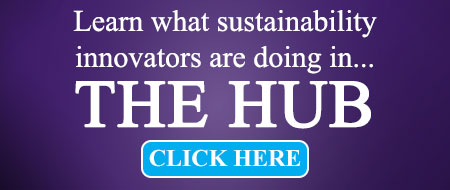Sustainability is important to companies but do investors notice or even care?

Martin Grosskopf of AGF addressing the audience at recent TSSS event, “Bay/Wall Street and Sustainability (Feb.5, 2015)
A 2013 United Nations Global Compact survey of one thousand CEOs representing 27 industries in 103 countries found that 93 percent viewed sustainability performance as important to their company’s future success. How can corporations have their sustainable development work more accurately reflected in their stock valuation? Professionals from sectors as diverse as mining, academia, energy, public relations, sustainability, marketing and finance gathered on Feb. 5, 2015 at the offices of Loyalty One in Toronto to explore answers to this question. (Learn more about the event theme and panel by clicking here)
Do investors understand sustainability?
Getting sustainability on the capital markets radar screen
The panel discussion explored the challenge of bringing sustainable development practices onto the radar screen of mainstream capital markets. Each panelist offered insight from his/her personal experience/perspective, but common themes quickly emerged around ideas of communication, timelines and focus in presentation of ESG data.
It’s all in the right number
It’s about the right messaging
Ian McPherson (Chair of the Investment Committee of the United Church of Canada, Founder Canada’s 1st Global Clean Energy Fund) suggested that the question, “Can Sustainability Analysis be Integrated into the Canadian Capital Markets?”, is one that reflects a belief that Bay St. does not appreciate sustainability. McPherson stated, “In my opinion, most sustainability advocates underestimate the appreciation of people in financial markets for ESG.” He explained that while many in the financial markets do appreciate ESG, there are a number of reasons why Canadian capital markets do not give sustainability the profile many sustainability advocates desire:
- Communication style: There is a disconnect between sustainability advocates and financial professionals when it comes to language and communication. Terminology is important – for example, the word “speculator” might evoke a negative perception of a gambler for many non-financial people, in financial markets it is a technical term for people who provide a valuable service through price insurance to farmers. In finance, most terms are very well defined, but sustainability has a ‘soft’ definition that lacks the clarity expected by financial professionals.
- Information overload: Sustainability advocates have pushed for measurement and statistics and while these are vital, there is now the problem that CSR report information is not helpful in decision making for money managers because what is useful is “buried in a CSR information haystack.”
- Mismatched time horizons: Financial services professionals are looking at short timelines and quarterly results while sustainability professionals are looking at LONG timelines (e.g. tough to forecast price/increase/availability of water more than a year in the future, so it becomes a nice to know, rather than a must know)

The TSSS audience sharing ideas with sustainability and investing experts, Ian McPherson, Julie Desjardins, Martin Grosskopf and Blair Feltmate.
It’s about knowing your audience
The next stage of communication
All three panelists agreed that sustainability advocates are wise to pursue financial professionals as agents of change because they are smart and influential and that it is now time to move on from information and education to the next stage of tactics with this constituency. One fundamental idea emerged from the panel discussion in terms of an approach for this “next stage”: sector-specific “Top 5 ESG metrics”.
Industry-specific material metrics
A set of sustainability metrics that are influential and most material for a particular sector could be presented as part of a clear evaluation of a company’s performance and potential for risk/reward. The selection of the right metrics would be key and they should be identified collaboratively with industry association involvement then communicated clearly through the Association of Canadian Financial Officers. The Top 5 ESG Metric information would need to be shared effectively by companies, with a prominent position within their annual report and, as Grosskopf suggested, innovative use of modern technology: “Nobody reads reports anymore…data must be available in an easily accessible package. If you can pull the data up quickly on your smartphone, then the managers have to manage it.”
Finding common ground
With the right information, communicated in the right way, sustainability advocates and financial professionals can understand each other and realize mutual benefit. And yet, is this enough to drive the real change that is needed to protect our planet and our future?
Learn more in Part Two of “Unrequited Love – Corporate CSR Reports and Bay Street” (Part Two – Bringing government into the relationship)
















